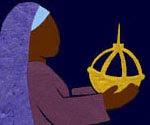My 20-year anniversary missionary posts are shot to heck. There's really only a couple months left in which to do any. My spiritual life has moved into a different channel. I would like to do one or two more posts in that series, though.
Today, though, I want to talk about a visit I made last month to the Sacred Grove. My husband and I spent the Fourth of July week in Cleveland, partly so I could make a presentation to the Community of Christ interns at the Kirtland Temple visitors center. While we were in the vicinity, we took a day trip out to Palmyra, something we've been talking about for years, even since we came back east so I could return to grad school. I haven't been to Palmyra since I was a toddler.
The weather was wretched, although in a way I guess that was a blessing because it meant I basically had the Sacred Grove to myself. No one else wanted to be out there in the pouring rain.
I appreciate how the grove is being managed: limited, low-key interpretative apparatus, a wonderfully extensive trail system so that even if there were lots of visitors, I imagine you could achieve some privacy.
I walked back for a good long ways until I found a spot that felt right for no particular reason, and then I paced for a while talking out loud to God. I had this feeling of having arrived at the place of origin, a place where the Presence is specially concentrated. I didn't have Eliade on the brain at that particular moment, but yes, we're talking hierophany here.
But I was also aware that I was standing in a mythic place of origin. This is the place where the story begins--and yet it's not. That paradox is true in a couple of different senses.
One: It's not really the place of origin because the story we tell about this place of origin probably didn't happen the way we tell it. Anyone who saw or heard the "Diagnosing the Seer" session I did at Salt Lake Sunstone last year, with Mark Thomas and Dan Vogel, on the historicity of the 1838 First Vision account knows that I voted gray or black on all the propositions we discussed. But that doesn't stop me from wanting to make my pilgrimage to this place. It doesn't stop me from experiencing the heightened Presence.
Two: It's not really the place of origin because even if the story were strictly historical, the site has changed since the 1820s. This is the insight that struck me during my trip last month, as I was pacing, looking up through the trees, getting drenched in the rain. My understanding is that site that is preserved as the "Sacred Grove" encompasses more than the original Smith property, ergo more than the original grove. Whether I'm understanding that correctly or not, the fact remains that the site I'm seeing now is not the site Joseph Smith prayed in. They're not the same trees. These trails weren't here. Who knows how else the landscape has been altered.
So it's the Sacred Grove, but the Sacred Grove has changed. It's not what it was in 1820. It has evolved into something different. But we still call it the Sacred Grove.
When that thought came to me in the grove, I also thought: That's an apt metaphor for my own Mormon identity. It has evolved into something different from what it was. But it's still Mormon.
Sunday, August 4, 2013
Subscribe to:
Posts (Atom)

